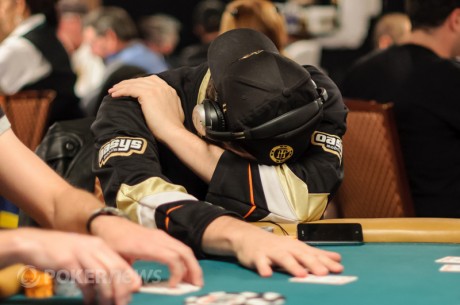Poker Shrink Vol. 54: Successive Approximations

I was playing poker the other evening and after losing yet another hand, the young player next to me mumbled: "Man, I just can't put that old guy onto a hand."
I was a bit surprised because the gentlemen he was referring to had played and shown down a lot of hands in the last couple of hours and I had what I was sure was a really good read on him.
"What did you put him on that hand?" I asked.
The distraught poker player said: "Ace-king or ace-queen."
Not a bad read, except that the gentleman had bet just like he had a middle pair and then showed pocket nines. A short time later, as the player folded again, he said quietly to me: "There's another A-K read gone wrong." Strange, I thought the older gentleman was once again betting like he had a medium-size pair and sure enough, he was playing pocket sevens.
I wondered why my young tablemate had not adjusted his read to at least include the possibility of a medium pocket pair, considering the previous hand we had discussed. They broke our table for the evening tournament a short time later and I had a chance to talk with the young player about his reads. What I realized from his description was that he was not making good reads, but what he was doing instead was remembering the bad reads and not adjusting his read on the older players. Then I remembered I had heard this several times before from poker players learning to make reads.
The process of getting a read on another player is completely about knowing what he has and basing your play on that foreknowledge. Reading is not about being as good as Daniel Negreanu or being able to call out someone's hole cards. What this player was doing was feeding his ego, or in this case destroying it, but he was not reading to gain information and win more chips.
He missed a step, which in psychology we call "successive approximation" and apparently he is not alone in this oversight. Using successive approximation we gradually can refine our actions, decisions, or options to a more precise point. If we reward or praise a child for attempting to read, he will try again. We then praise him for reading a word, then a phrase, a sentence, and a paragraph. We are successively rewarding behaviors that are steps in the process of reading. As we support each newer achievement, we approach the goal we are after.
So, you make the A-K read on a player because he limped under the gun and then bet out on the disconnected flop. When he shows down 8-8, you simply adjust your read. Next time he limps under the gun, you put him on a medium pair; then when he shows the A-K, you can adjust again. He plays A-K and medium pairs the same way when he is under the gun. You don't care if your reads are brilliant, you shouldn't care how many times you have to adjust your read. The idea is to get it right.
By using successive approximation, you allow yourself the latitude to make a bigger range of reads and you, over time, narrow in on a player's tendencies without discarding your original reads. It only makes sense to put a player on A-K early; it is a very common hand to play. But when you are wrong about that read, it's not a failure; it is simply a mis-approximation of how this player plays poker. All you are really after is a solid correct read. You can effectively narrow in on a truly great read with a series of successive approximations.
Join the excitement and get your Poker Stars Marketing Code From PokerNews.com - The leading source of poker news and information.







